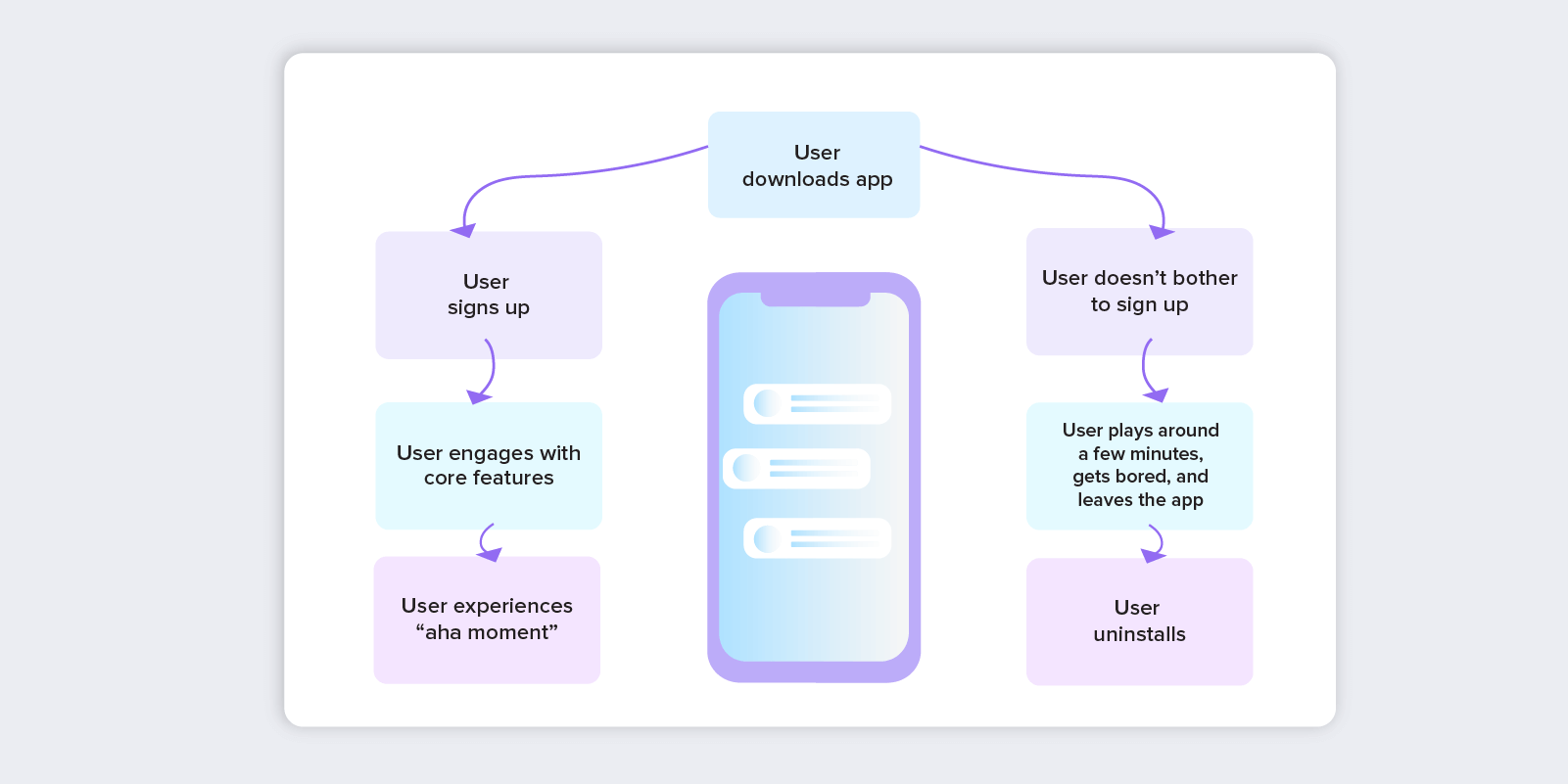User Retention
What is User Retention?
Definition:
User retention is a critical aspect of digital product management that focuses on keeping users engaged and active over an extended period. It refers to the ability of a product or service to retain its existing user base and prevent churn. Successful user retention strategies go beyond acquiring new users and concentrate on providing value, addressing user needs, and creating a positive user experience to encourage ongoing usage.
Analogy:
Imagine a gym that not only attracts new members but also ensures that existing members continue to visit regularly. Similarly, user retention in the digital realm involves not just acquiring new users but also fostering a long-term relationship with the existing user base.
Further Description:
User retention involves various elements, including:
Value Delivery: Providing continuous value through product updates, relevant content, or additional features to keep users engaged.
Customer Support: Offering effective customer support to address user concerns and ensure a positive experience.
Personalization: Tailoring the user experience based on individual preferences and behavior, enhancing engagement.
Feedback Loop: Establishing a feedback loop to understand user needs, concerns, and expectations for continuous improvement.
Why is User Retention Important?
Stability and Growth: A stable and engaged user base forms the foundation for sustainable growth, as retained users are more likely to advocate for the product.
Cost-Effectiveness: Retaining existing users is often more cost-effective than acquiring new ones, as it requires fewer resources and marketing expenses.
Brand Loyalty: User retention builds brand loyalty, creating a connection between users and the product or service.
Data Utilization: Retained users provide valuable data that can be leveraged to enhance the product, customize experiences, and identify trends.
Examples and Usage:
Netflix: Netflix employs various user retention strategies, including personalized recommendations, continuous content updates, and user-friendly interfaces, to keep subscribers engaged and satisfied.
Amazon Prime: Amazon Prime utilizes a combination of fast shipping, exclusive deals, and a diverse range of services (Prime Video, Prime Music) to retain its customer base.
Spotify: Spotify employs personalized playlists, algorithm-driven recommendations, and regular updates to keep users immersed in the platform and discourage them from switching to competitors.
Key Takeaways:
- User retention is closely tied to consistently delivering value to users.
- Open communication channels and feedback loops are essential for understanding and addressing user needs.
- Building a long-term relationship with users goes beyond the initial acquisition phase.
- User retention strategies should adapt to evolving user preferences and industry trends.
Table of Contents





